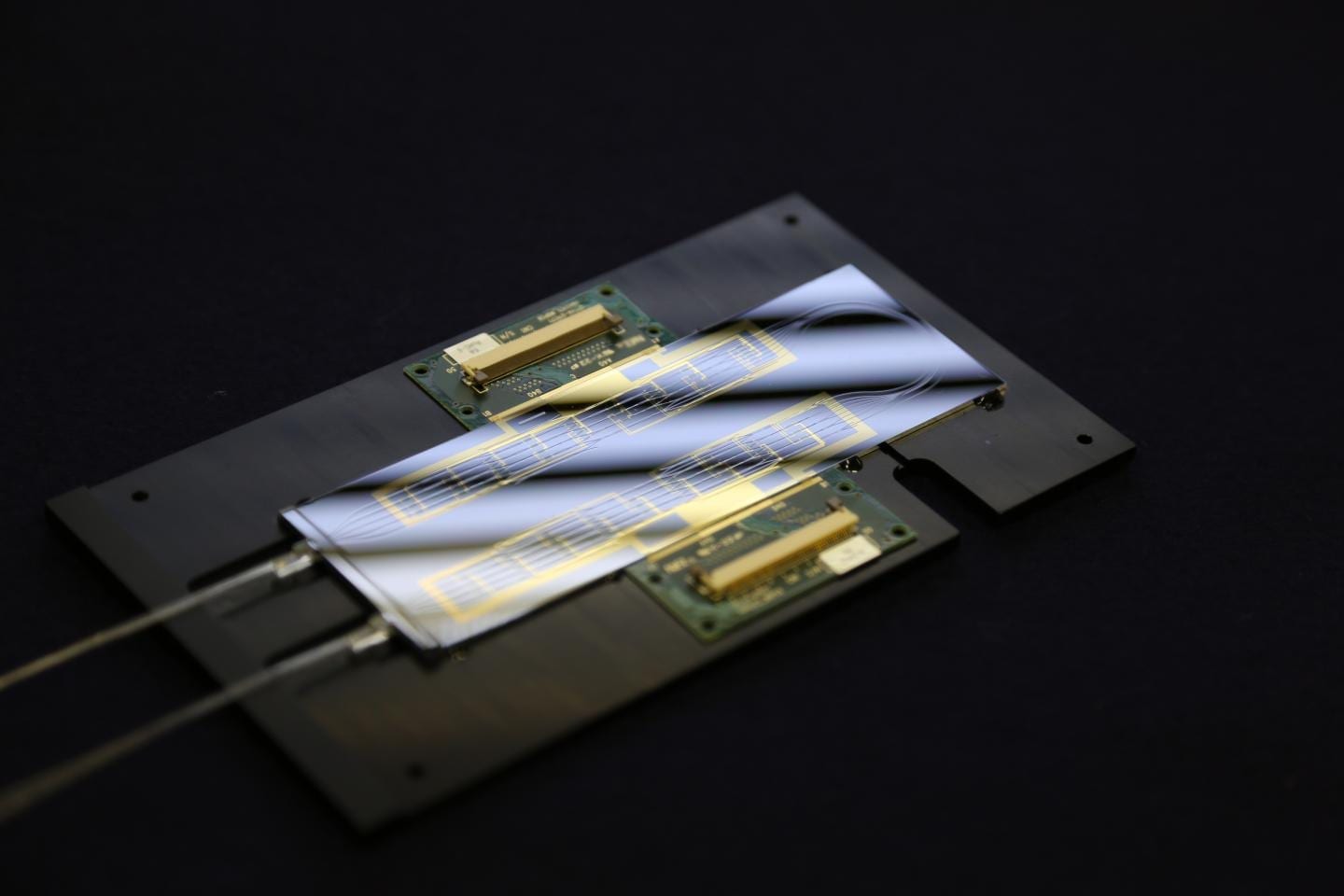
CREDIT
Amir Feizpour
A team of physicists at the University of Toronto (U of T) have taken a step toward making the essential building block of quantum computers out of pure light.
Their advance, described in a paper published this week in Nature Physics, has to do with a specific part of computer circuitry known as a “logic gate.”
Logic gates perform operations on input data to create new outputs. In classical computers, logic gates take the form of diodes or transistors. But quantum computer components are made from individual atoms and subatomic particles. Information processing happens when the particles interact with one another according to the strange laws of quantum physics.
Light particles – known as “photons” – have many advantages in quantum computing, but it is notoriously difficult to get them to interact with one another in useful ways. This experiment demonstrates how to create such interactions.
“We’ve seen the effect of a single particle of light on another optical beam,” said Canadian Institute for Advanced Research (CIFAR) Senior Fellow Aephraim Steinberg, one of the paper’s authors and a researcher at U of T’s Centre for Quantum Information & Quantum Computing. “Normally light beams pass through each other with no effect at all. To build technologies like optical quantum computers, you want your beams to talk to one another. That’s never been done before using a single photon.”
The interaction was a two-step process. The researchers shot a single photon at rubidium atoms that they had cooled to a millionth of a degree above absolute zero. The photons became “entangled” with the atoms, which affected the way the rubidium interacted with a separate optical beam. The photon changes the atoms’ refractive index, which caused a tiny but measurable “phase shift” in the beam.
This process could be used as an all-optical quantum logic gate, allowing for inputs, information-processing and outputs.
“Quantum logic gates are the most obvious application of this advance,” said Steinberg. “But being able to see these interactions is the starting page of an entirely new field of optics.
Read more: A little light interaction leaves quantum physicists beaming
The Latest on: Quantum logic gates
[google_news title=”” keyword=”Quantum logic gates” num_posts=”10″ blurb_length=”0″ show_thumb=”left”]
via Google News
The Latest on: Quantum logic gates
- Atomera (ATOM) Q1 2024 Earnings Call Transcripton April 25, 2024 at 11:00 pm
Hello, everyone, and welcome to Atomera's first quarter fiscal year 2024 update call. I'd like to remind everyone that this call and webinar are being recorded, and a replay will be available on ...
- Reimagining Memory: New Research Reveals That Superconducting Loops Mimic the Brainon April 19, 2024 at 6:10 am
Superconducting loops could allow computers to retain and retrieve information more efficiently. Computers work in digits — 0s and 1s to be exact. Their calculations are digital; their processes are ...
- Chip Industry Week In Reviewon April 19, 2024 at 12:01 am
TSMC, SK hynix HBM deal; Intel's high-NA EUV; big haul for Micron, Samsung; Cadence's new emulation, prototyping systems; architecting chips for HPC; Japan, China's IC output; funding for metrology; ...
- Microsoft And Quantinuum Improve Quantum Error Rates By 800xon April 18, 2024 at 5:22 pm
Microsoft and Quantinuum researchers have achieved a significant improvement in quantum error correction that could pave the way for more powerful quantum computers.
- Blueprint Unveiled: Simplifying Programming for Quantum Computerson April 16, 2024 at 6:11 pm
When MIT professor and now Computer Science and Artificial Intelligence Laboratory (CSAIL) member Peter Shor first demonstrated the potential of quantum computers to solve problems faster than ...
- How logic alone may prove that time doesn't existon April 16, 2024 at 9:06 am
Modern physics suggests time may be an illusion. Einstein's theory of relativity, for example, suggests the universe is a static, four-dimensional block that contains all of space and time ...
via Bing News











